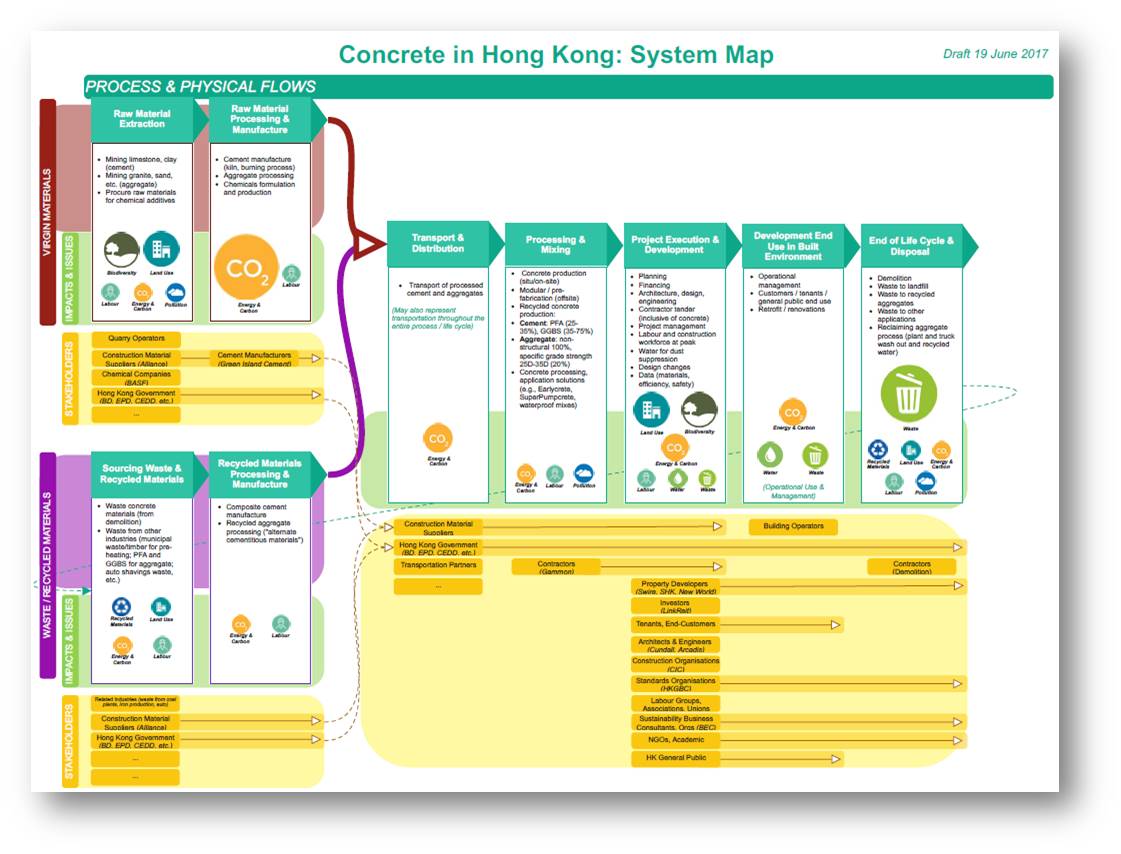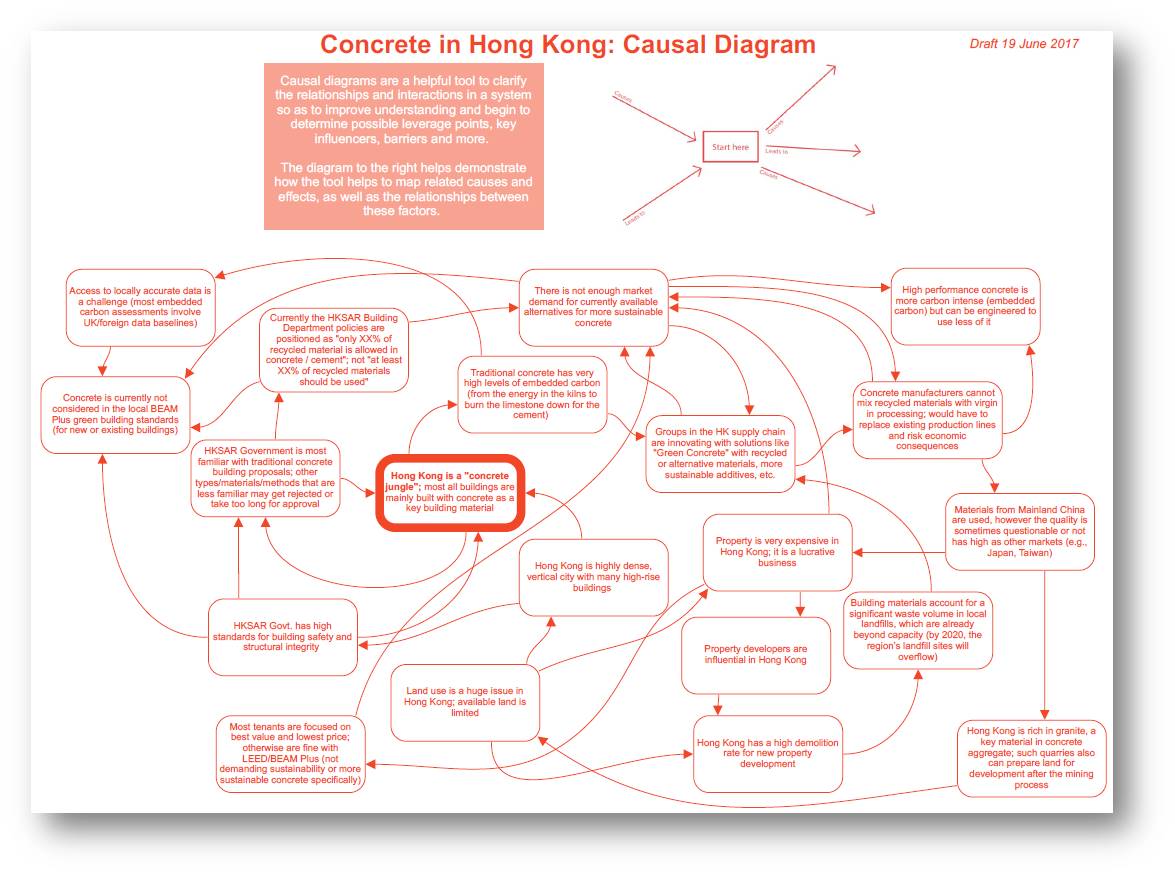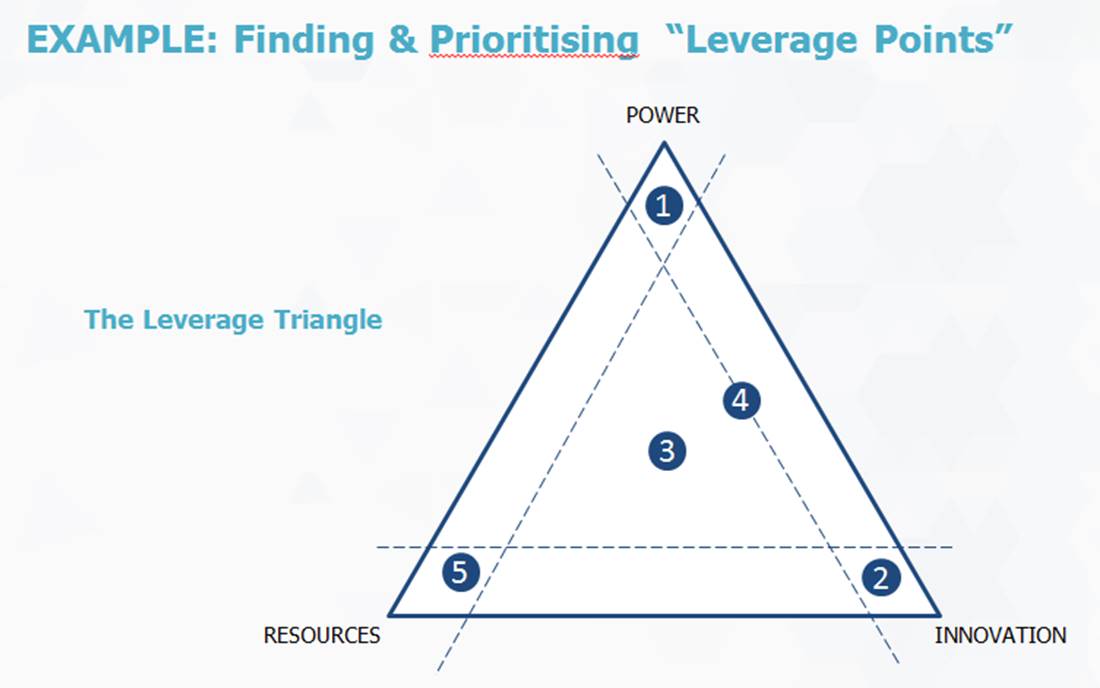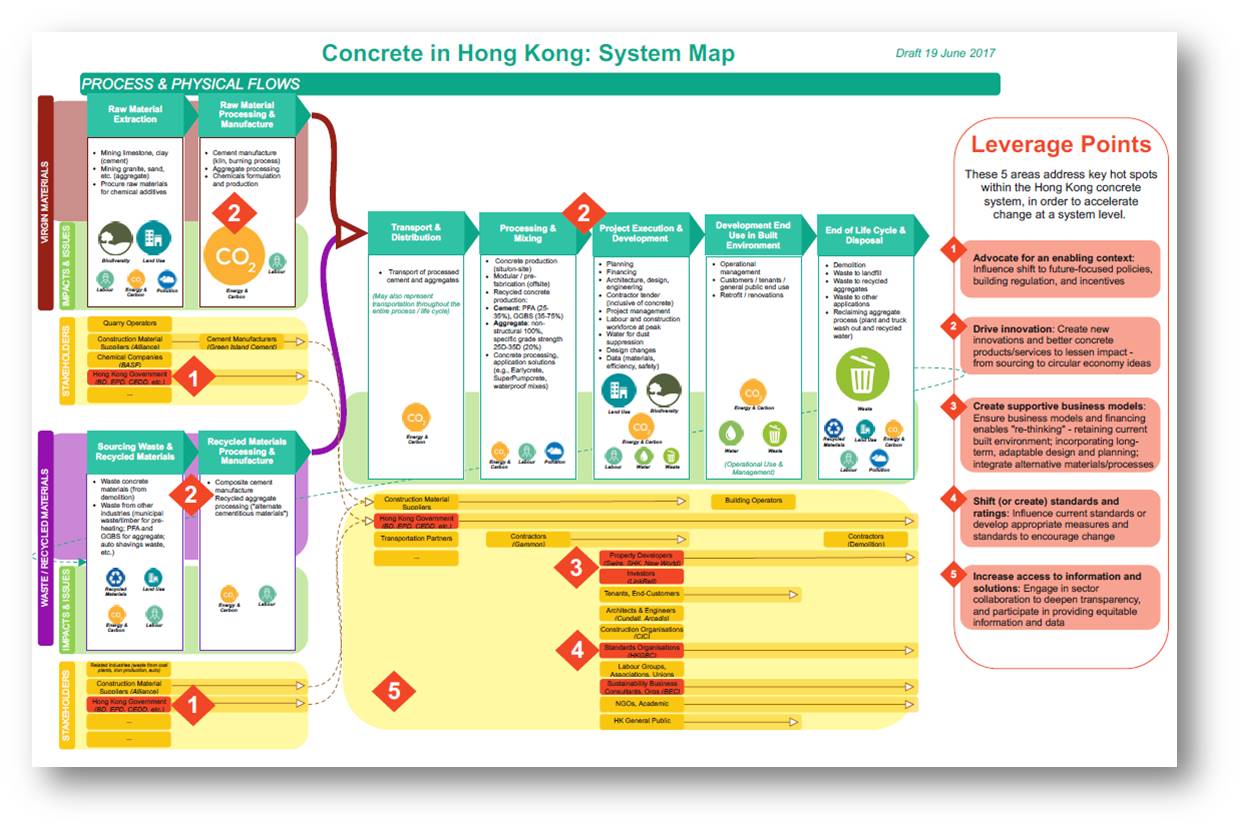Hong Kong: Exploring a More Sustainable Concrete Jungle
Using System Change as a Lens to Explore Sustainable Pathways for Concrete as a Key Building Material in Property Development
One recent project got up close and personal with the materials in the concrete jungle I called home. It began with an aim to explore systems thinking as an approach that Hong Kong businesses/MNCs can leverage to effectively address complex sustainability challenges.
I collaborated with Swire Properties, one of the largest and most prominent property development players in Hong Kong, to explore "systems thinking" applied to their sustainability strategy. This took shape in a focus on key building materials in the supply chain of the property and built environment sector (e.g., concrete, timber, steel, etc.). After an initial discussion, it was determined that concrete may be quite an interesting material to investigate to understand the current context and future potential for more sustainable supply chain/procurement.
Why Concrete?
Concrete is the most widely used construction material in the world. The production of concrete requires cement (think of it as the glue that keeps the aggregate together), and this cement is the culprit for concrete’s footprint. It generates large amounts of carbon dioxide in the energy it takes to produce cement. Even a small reduction of 10% in the consumption of cement can make a significant difference in protecting our global ecosystems.
Globally, we have doubled production of cement in the past 30 years. China’s statistics are even more drastic, outdoing the U.S.’ entire 20th century production in just 3 years.
There are a number of reasons concrete is a unique issue for Hong Kong:
- Concrete is a key building material for local property developers – it is among the largest volume of materials used in Hong Kong
- Concrete also has a large environmental footprint (high embodied carbon)
- Because of its unique land scarcity issue, Hong Kong has a high demolition rate to make way for new development
- This makes concrete a significant waste material in Hong Kong’s overflowing landfills
- There may be significant potential savings (economically and ecologically) and opportunities for more sustainable material innovations in the market
With this in mind, I set out to conduct a systemic diagnosis and share a draft framework with ideas and tools for related industry organizations.
What does “systemic diagnosis” mean?
We first needed to understand our system and the players, dynamics and patterns inside it.
Taking a “systems” lens would help shift our mode of thinking or perspective – to see the bigger picture, the complex environment that related businesses operate in, and how everything is connected. This broadened perspective informs strategic interventions that are effective, lasting and ultimately more sustainable.
The key to gathering this perspective is hearing from stakeholders in the system, from all corners. Alongside research into local and international markets, I conducted interview conversations with architects, engineers, contractors, suppliers, and industry associations - including Swire Properties, Gammon, Cundall, Alliance Construction Materials, Construction Industry Council (CIC), and HK Green Building Council (HKGBC).
This research informed draft system maps and causal diagrams...
After mapping our system to understand the stakeholders and dynamics, the ultimate aim is to determine draft leverage points for how to focus resources and energy.
So what? What is a “Leverage Point”?
Leverage points help to focus resources and energy where a small change can produce a larger, systemic effect. These are the points on the map where a significant challenge or number of barriers converge, along with the resources and/or power to act to address them.
We determined five areas to address key hot spots within the Hong Kong concrete system, in order to accelerate change at a system level.
- Advocate for an enabling context: Influence shift to future-focused policies, building regulation, and incentives
- Policy/incentive to facilitate the recycling sector and recycling initiatives in property and related industries (e.g., waste taxation, recycling incentive)
- Drive innovation: Create new innovations and better concrete products/services to lessen impact - from sourcing to circular economy ideas
- Engage key parties across “the entire system” around concrete product and process innovation (E.g., connecting demo contractors and suppliers to provide waste/recycled materials)
- Pursue possibility to integrate recycled materials from other industries into the manufacture of new concrete with reduction in virgin material demand and environmental impact
- Create supportive business models: Ensure business models and financing enables "re-thinking" - retaining current built environment; incorporating long-term, adaptable design and planning; integrate alternative materials/processes
- Retaining built environment and current stock/assets, “placekeeping”
- “Design” life can be extended at low cost; concrete structures are inherently robust and repairable
- Long-term planning, “green” purchasing policies, and decision-making practices
- Engaging tenants, councils and general public in dialogue and sharing education to encourage demand for more sustainable solutions in built environment and responsible sourcing/circular economy
- Shift (or create) standards and ratings: Influence current standards or develop appropriate measures and standards to encourage change
- Policy/incentive for innovation with concrete materials and sustainable building solutions (e.g., altering building standards to allow for / BEAM Plus standards to encourage more recycled materials in building planning/construction)
- Increase access to information and solutions: Engage in sector collaboration to deepen transparency, and participate in providing equitable information and data
- Pursue local data to inform embodied carbon assessments with locally / regionally relevant inputs
- Engaging academic community for such data, and practical applications of product / process innovation
The draft findings, maps and leverage point proposals have been shared with all of the people engaged for discussions and feedback – because no one person or small group in isolation holds the keys to perspective on a system. Each perspective is valid and true, which is what makes a systems lens that much more rich and valuable in shaping interventions that act for the health of the whole.







